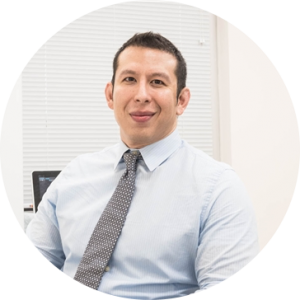Board Certified, New York City Based, Osteopath Specializing in Spine, Pain and Sports Medicine
Shoulder Pain
What Is A Rotator Cuff?
A rotator cuff is a collection of muscles and connective tissues that cover the ball and socket joint of the shoulder. The rotator cuff refers to four specific muscles (the subscapularis, supraspinatus, infraspinatus, and teres minor muscles) and their related tendons that work to stabilize the joint and help maintain the strength and integrity of the shoulder joint. When the shoulder is damaged, the rotator cuff is a common area of injury. When the tissues of the rotator cuff become compromised, the ability to adequately move or lift the arm can also be compromised. In some cases, the tendons and ligaments are torn. When this occurs, certain injections may be considered. In severe cases surgery to repair the rotator cuff may be needed to help correct the damage and allow the shoulder to function efficiently.
How Do Shoulder Injuries Occur?
Shoulder injuries may occur in several different ways. Shoulder pain may come from inside the shoulder joint or from any of any one of the surrounding muscles, ligaments or tendons. Injuries to the shoulder can be caused from an acute or repetitive trauma, poor biomechanics, or inflammation. Many causes of shoulder pain can fall into the following categories:
- Tendon inflammation (bursitis or tendinitis) or tendon tear
- Instability
- Arthritis
- Fracture (broken bone)
Shoulder Tear Symptoms
The end result of a shoulder injury is inflammation, pain, limited range of motion, and reduced mobility. Pain with movement or activities with of your arm or shoulder usually means it comes from the joint itself.
Shoulder Strain Risk Factors
Repetitive motion injuries are the most common type of shoulder injuries. A repetitive motion injury is caused by repeatedly making the same motions with the shoulder over and over and over again. The repeated movements can cause unnatural wear and tear on the joint leading to pain and inflammation. The painful results of wear and tear may become more severe as you get older. Another common shoulder injury is falling on the joint when the arm is at an odd angle. This puts pressure on the rotator cuff as well as the socket of the joint.
How Is Shoulder Pain Treated?
Doctors have many ways to effectively treat shoulder injuries. Commonly used methods are physical therapy or, in severe cases, surgery. With today’s advancements in medicine, doctors can now use new methods to help rejuvenate damaged tissues and speed up the healing process. Other therapies, like radiofrequency ablation, or the judicious use of steroid injections may also prove to be beneficial in certain situations. Doctors may choose from multiple treatment methods to create an ideal pain management plan for you that will ideally relieve pain and inflammation quickly, so that you may return to living a normal life.
What If I Have Shoulder Pain?
If you are having shoulder pain and discomfort use proper biomechanics in your day to day activities, especially when working out. Specific exercises and movements may be needed to get the body in proper alignment for use. If you have shoulder pain see a shoulder pain specialist that knows all about the shoulder. Dr. Yasha Magyar is a double board certified. He’s Board Certified in physical medicine, rehabilitation and Board Certified in Pain Medicine. Don’t hesitate to contact Network Spine to help with your shoulder pain issues.

